Some say vote, some say take up the sword. On our battlefields, the Morrigú/ the Morrigan was always with us, but not always on the side of the Tuatha De Danaan.
When she and Cú Chulainn met, he insulted her before his attack on the battlefield. She turned herself into a raven-crow and croaked at him from the branch of a tree. Afterwards he apologised with an obvious grudge.

She said to him,
“It is at the guarding of thy death that I am; and I shall be.”
Relations soured. Queen Maedhbh went to war over the bull of Cuailgne, and Cú Chulainn, spurned the Morigiu’s offer of help. So she slithered herself into the form of an eel and tripped him up.

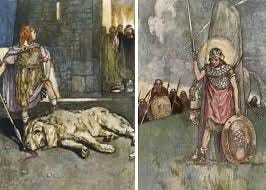

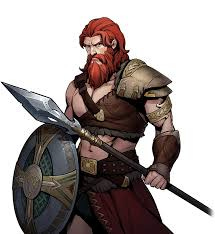
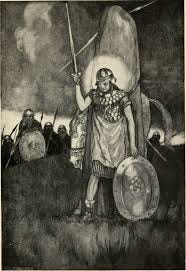
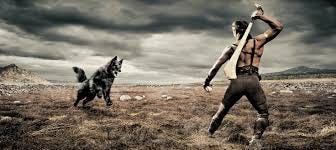
Her trickery continued with the wolf she sent to stampede cattle over the ford and a white cow with red ears that led them over the edge.

Cú Chulainn wounded the Morrigú three times in retaliation and she came to him as an old crone and he begged her for the milk she was getting from the cow she milked, so she gave him milk from the third teat and her leg, wounded in his battle, was healed by him.
“You told me once,” she said, “that you would never heal me.”
“Had I known it was you,” said Cú Chulainn, “I never would have.”
On the eve of the battle of Muirthemne she came to him as three crones roasting a dog over a rowan-pit fire. But Cú Chulainn’s geas ( holy taboo ) forbade him to eat the flesh of a dog. The crones mocked him and so he took a bite of the dog meat and death took him the next day, so he bound himself to a standing stone with his own entrails to die on his feet, but still the Morrigan came to perch on his shoulder in her raven form.
Diarmuid O'Duibhne, on the other hand, was blessed by the Morrigan when he found her in the shape of an old crone struggling to ford a river and took her on his back. She granted him the gift of comeliness, and said that no woman could turn from his eye and yet that gift had a price, as he went into battle with Fionn Mac Cumhaill over Grainne, so the Morrigan’s thirst for battle always takes precedence.
She lives on today in the Da cich na Mórrigna, the Paps of the Morrigan and below them stands the Lia Fáil on the Hill of Tara in County Meath. She is remembered by ancient firepits where young men gathered before battle, called the fullachta fiadh.
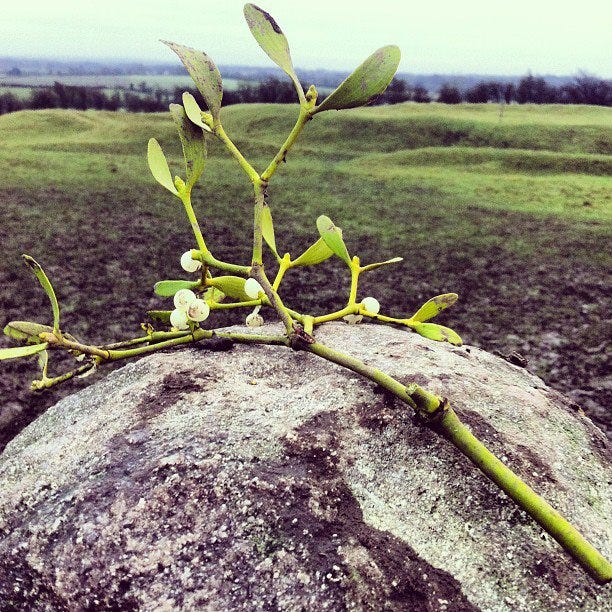
In the second battle of Mag Tuired (Moytura), she rallied the Tuatha De Danann on:
“Then the Morrigu, daughter of Ernmas, came, and heartened the Tuatha Dé to fight the battle fiercely and fervently. Thereafter the battle became a rout, and the Fomorians were beaten back to the sea.”
The Morrigú, proclaimed that battle and the mighty victory to the royal heights of Ireland and to its fairy host and its chief waters and its river-mouths. '
Good had prevailed over evil, and it was settled that all Ireland should for ever afterwards be a sacred country ruled over by the People of the Goddess Danú and the Sons of Mil. The Tuatha De Danann with their war-goddess fought their own battles in which human beings play no part. So it was. So it should be again.
She, Morrighan/ Mór-Riogain/ Morrigú was our great Warrior Queen, great stirrer of fury and frenzy in battle, a bringer of Death. She was and could still be the Supreme War Goddess of the Gaels, a Greek Hera, the moon preceding the sun, worshipped with ferocious rites. She is fully armed and goes to battle with two spears in her hand. Like Poseiden in the Illiad, her battle cry was as loud as a thousand men. The Morrigan’s crow was a sign of death on the battlefield, and its flight over that battlefield was a harbinger of death. The landing of crows or ravens on a cottage roof meant the death of one of the family or some great misfortune and so perhaps the bird was the predecessor of the Bean Sídhe.
The Morrigan held over royston-crows, and the dread of those birds is echoed in the recorded tales of Wales, Scotland, and Brittany. In the Mabinogi, 'Dream of Rhonabwy,' Owain, prince of Rheged and a contemporary of Arthur, has a crow which ensures his victory in battle, a crow that had three hundred other crows under its leadership. In Campbell's Popular Tales of the West Highlands the fairies exercise their power in the form of the common hoody crow; and in Brittany there is a folk-tale entitled 'Les Compagnons' in which the chief actor is a fairy under the form of a magpie who lives in a royal forest just outside Rennes.
The Badb is a war goddess who often takes the form of a crow, and in some Irish manuscripts her name is directly defined as a type of crow, the Hooded Crow (Royston Crow, Scald Crow). She is thus sometimes known as Badb Catha which means ‘battle crow’.
T. H. White described his Morgause, (his Morrigan) as-
She should have all the frightful power and mystery of women. Yet she should be quite shallow, cruel, selfish…One important thing is her Celtic blood. Let her be the worst West-of-Ireland type: the one with cunning bred in the bone. Let her be mealy-mouthed: butter would not melt in it. Yet also she must be full of blood and power. -T.H.White, the Once and Future King
T.H. White, tortured by his repressed sexuality and sado-masochistic tendencies, had a terrible relationship with his own mother, and once wrote to his friend David Garnett (asking him to call on her), “She is a witch, so look out, if you go.”
White is afraid of the Morrigan, himself. He didn’t find his Morgause in Sir Thomas Malory’s Morte D’Arthur. Malory’s Queen Morgawse isn’t an enchantress like her half-sister Morgan Le Fay. ‘Le Morte D’Arthur’ shows her as the Grande Dame of adultery, not sorcery. White created his Morgause out of his own fear and loathing.

’The Morrigan is any shape that pleases her. She is any shape that suits her in any situation. She is eel, she is she-elf, she is hornless red heifer, she is red mouthed scald crow. Though a people prayed to her she wouldn’t send rain in a time of drought or stand in battle with them against an invader. Worship of Morrigu, red-mouthed Morrigu, had to be pure…. In her form as scald crow, she called above me everyday, (in the Paps) circled and called, searching for afterbirths, for corpses, for carrion… ‘ -John Moriarty, Dreamtime)
The Morrigú
She of the Crow
Frenzied in battle,
Marvels as men stagger
Off the battlefield,
Throw themselves at her feet.
The Battle of Clontarf-
The beginning of all our woes.
A faery came to Dunlang O’Hartigan,
A faery called Aoibheall.
“Put down your sword’” she said
“Two Hundred years of happiness
You will have, if you do.”
The Morrigú had taken Dunlang’s soul.
He, his son Turlough,
Murrough and Brian Conanig,
Nobles of Eriú
All fell.
Sometimes it is worth dying.
Those that never fear the battlefield,
Are entrenched by mud.
Mummified by it.
Like bog men.
The Morrigan’s crow picks out their eyes
Takes them to another world
Where they see again.
Not a bad sacrifice, to the Morrigú.
To be born in another time,
To see the wretched world
With a pair of fresh, new eyes.
Maybe they watch us, now.
Maybe defeated Fomorians
Have their pecked out eyes on us.
© Siofra O’Donovan, 2023
THANK YOU FOR READING MY WORK. DO CONSIDER THAT IT IS ALL FREE, AND THAT YOU COULD :-




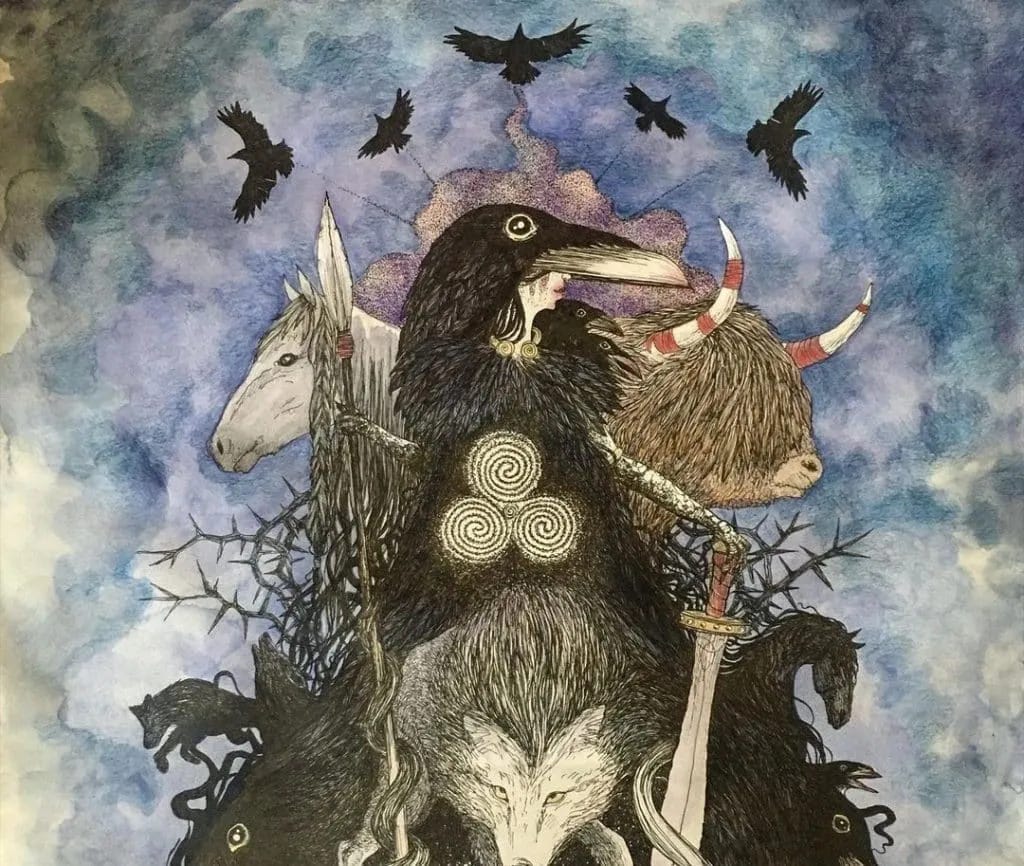
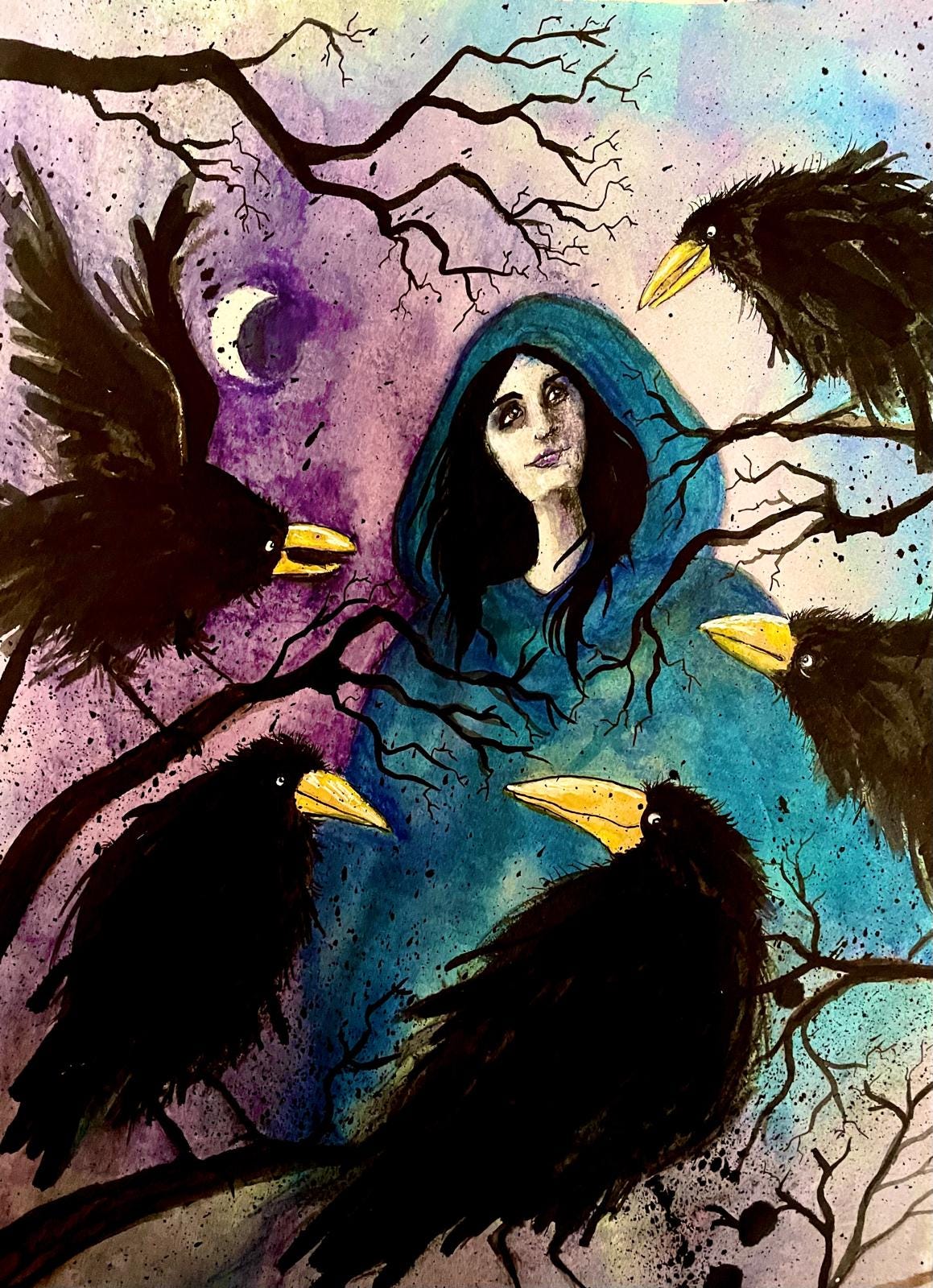



Well the substack comment box seems to be working now. Like the whole story except the 3 witches roasting and eating the dog; I don't go along with eating either dogs or rabbits. However the photos are good and I've seen the rounded rock @ Tara but of course without the mistletoe. Must look out for the Paps above Tara. Didn't know Morrigan also turned into an eel. Fin McCaul was clearly no match for her and oh yes, I'm glad to hear of the cow with the red ears again much associated with the Bealtaine. Yesterday was the important full moon of the Bealtaine, the Flower Moon! I certainly liked the picture of Morrigan with all the crows flying around and the cresent moon
Very good text, thank you